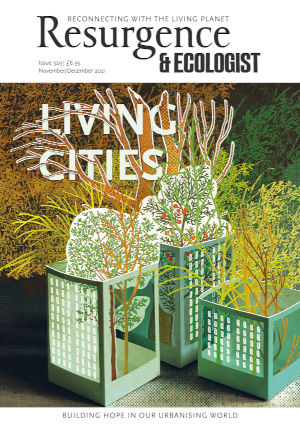This book developed from a walking tour of London that the author began leading in 2015. It took in Blake’s “dark satanic mills”, the former site of Boulton and Watt’s steam-powered flour mill beside Blackfriars Bridge, a world first when it was built in 1786. It wandered past Royal Dutch Shell’s headquarters on the South Bank, and the old Bankside Power Station, now Tate Modern. It finished up outside the former offices of the Department of Energy & Climate Change. These are all places I know well, landmarks in my city life, and places I have never much considered. But to know the history of the climate crisis is to understand that the building blocks of our current emergency lie all around us, the dots there to be joined if we only know how to read our past.
Attempting a history of climate change is immensely ambitious, and that becomes clear early on in Alice Bell’s extremely comprehensive piece of scholarship. It is a global story that encompasses everything from maverick Victorian inventors to the politics of the Cold War, from the history of weather forecasting to the racism embedded in the conservation movement, from the Luddites to the CIA. In so doing, the book makes a very persuasive case that climate change is not, and never has been, an issue only for the greens. This is a history of everything, and it speaks to the past and future of every aspect of our lives.
Two stories run side by side here. The first thread details how we arrived at the 415ppm of CO2 that hovers in our atmosphere today. We see the scientists who harnessed steam in the 18th century, first put to use in industry and then later on in transport, before it was surpassed by gas and oil. We see the growth of electricity, in its beginnings a novelty that lit up ballgowns and was performed as entertainment in the music halls, and later a futuristic vision to liberate us from drudgery and work. And alongside the buzz of each leap forward we meet those whom progress rode roughshod over, from the workers with coal dust in their lungs to the Nigerian activists executed for protesting Shell’s involvement in the Niger Delta.
Alongside this is the story of how we came to understand we had a problem. It wasn’t until the middle of the 18th century that anyone had even considered that the air was made up of different gases. Joseph Black first identified carbon dioxide in 1754. In 1856, Eunice Newton Foote described the potential for it to warm our atmosphere. Another century later, and Roger Revelle was the first to write that in burning fossil fuels, humanity was carrying out “a large scale geophysical experiment”. There has been a dizzying amount of work to reach the understanding that we have achieved today.
We had wind turbines, solar panels and electric cars by the end of the 19th century. In April 1950 Scientific American ran a feature on “The Changing Climate”, not as some future scenario, but as something happening then and now. By the end of that decade, links were being drawn between the burning of fossil fuels and sea-level rise. As Bell asks in her conclusion, “Why did it take so bloody long?” But while we can despair at how different things could have been, this is also a book about human ingenuity, about the lone inventors and international collaborations without which we would be even more adrift than we are. Can it make a difference? George Bernard Shaw is said to have quipped: “We learn from history that man can never learn anything from history.” It is quite clear that we have that luxury no longer.






